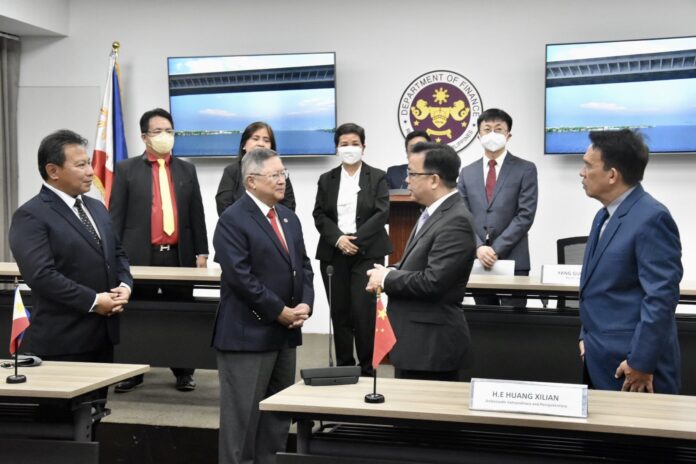
-
The 2.34-billion renminbi (P17.39 billion or US$362 million) loan from China will pay for the bulk of the construction cost of a two-way, four-lane bridge that will link Davao City and Samal Island in Mindanao
-
The concessional loan will cover 90% of the P19.32 billion financing requirements of the design-and-build Samal Island-Davao City Connector (SIDC) project
-
The 3.98 km-long bridge will provide a resilient and reliable transportation link between Metro Davao and Samal, cutting travel time from 26 to 30 minutes via roll on/roll off ferry to 5 minutes
-
The project is expected to break ground in July and construction is estimated to last 60 months
China is lending the Philippines RMB2.34-billion loan (P17.4 billion or US$362 million) to finance the construction of a two-way, four-lane bridge connecting Davao City and Samal Island in Mindanao.
The two countries signed the loan agreement on May 31 and exchanged documents on the framework agreement and concessional loan agreement on June 13. The Samal Island-Davao City Connector (SIDC) project or the Davao-Samal bridge is the country’s first renminbi-denominated debt secured from China under the Duterte administration, the Department of Finance (DOF) said in a statement.
The concessional loan is payable in 20 years inclusive of a seven-year grace period and has an interest rate of 2% per annum. It will cover 90% of the financing needs for the P19.32 billion design-and-build project.
Finance Secretary Carlos Dominguez III and Chinese Ambassador to the Philippines Huang Xilian exchanged the documents on behalf of their respective governments.
The Department of Public Works and Highways (DPWH), the main implementor of the project, entered into an agreement with the China Road and Bridge Corp. for the construction of the SIDC bridge.
The Davao-Samal bridge will cut travel time between Davao City and Samal Island to about 5 minutes, from the 25 to 30 minutes that it takes to travel on a roll on/roll off ferry service currently plying the Davao City-Samal route. The bridge will also reduce public dependence on the ferry service.
The bridge will connect the Samal Circumferential Road in Barangay Limao, Island Garden City of Samal, to Davao City between the R. Castillo-Daang Maharlika junction.
Its total length of 3.98 km includes the Davao ramps, an at-grade road and a roundabout in Samal. The bridge will be 24 meters wide and have a vertical navigational clearance up to 47 meters. The crossing over Pakiputan Strait will also be supported by two 73-meter high pylons.
DPWH Undersecretary Emil Sadain said the project is expected to break ground in July and construction is estimated to last 60 months.
Once complete, the bridge will provide a resilient and reliable transport link between Metro Davao and Samal Island, enhancing internal mobility and external linkage to support the economic and tourism growth potential of the region.
The project is also seen to increase economic activity and improve the livelihood of the local people who have long dreamed of having such a bridge, Sadain said.
With the signing of the loan accord for the Davao-Samal bridge, China’s financing commitments to the Philippines now totals US$1.1 billion, including loans for the Chico River Pump Irrigation Project of the National Irrigation Administration, the New Centennial Water Source-Kaliwa Dam Project of the Metropolitan Waterworks and Sewerage System, and the project management consultancy of the Philippine National Railways South Long-Haul Project of the Department of Transportation.
The SIDC project complements the Mindanao Spatial Strategy/Development Framework 2015-2045, the Davao Regional Development Plan, and the Davao Gulf Area Development Plan 2011-2030, all of which are envisioned to facilitate commerce and trade, generate jobs, create wealth among the local government units in Mindanao, and share the benefits of growth to more remote municipalities, including Samal.
The Brunei Darussalam-Indonesia-Malaysia-Philippines East ASEAN Growth Area Cooperation, which intends to promote economic development in underdeveloped and geographically remote regions in its member countries, is also expected to benefit from the SIDC project.




